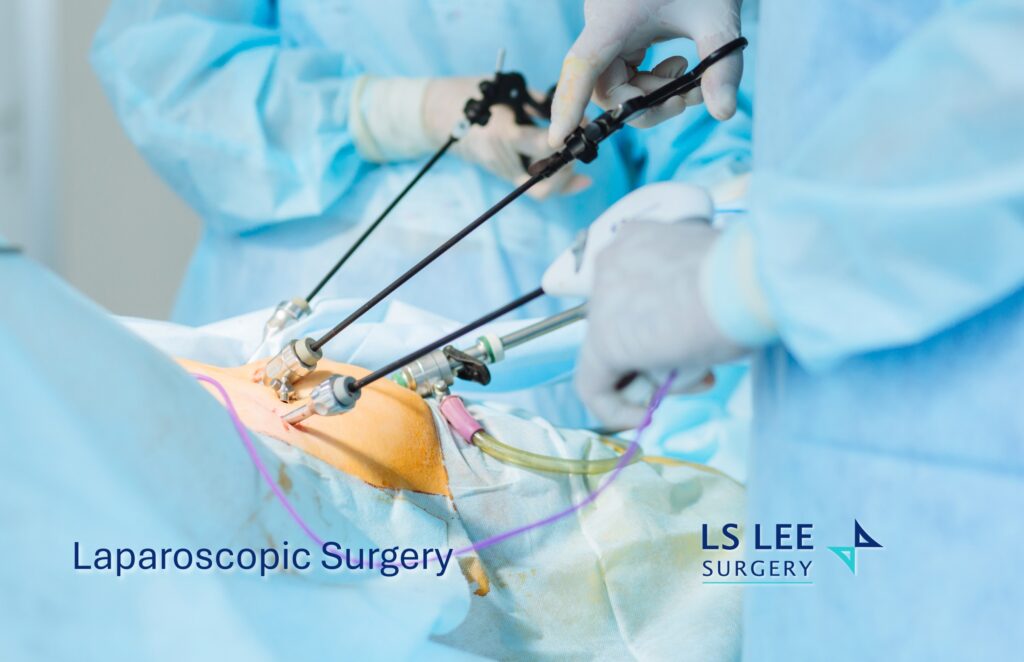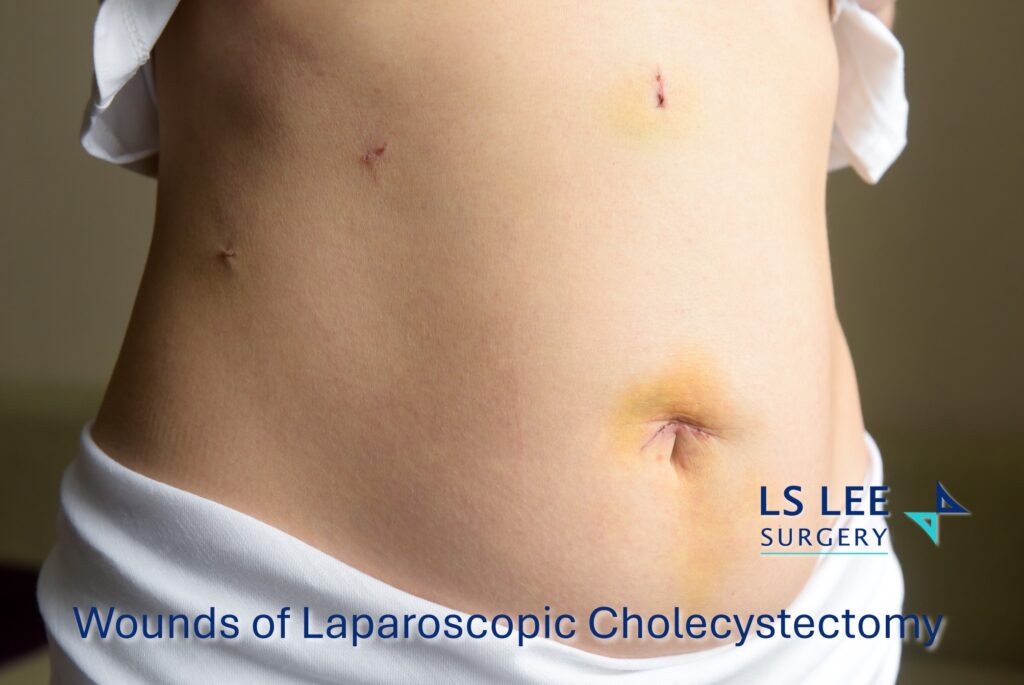Laparoscopic Cholecystectomy in Singapore – Keyhole Gallbladder Surgery
What is Laparoscopic Cholecystectomy? (Ko-li-sis-tec-to-me)
Laparoscopic cholecystectomy is a minimally invasive surgical procedure used to remove the gallbladder. This procedure is often recommended to treat symptomatic gallstones, gallbladder inflammation (cholecystitis), bile duct infections, or gallbladder cancer.
The gallbladder is a small, pear-shaped organ located beneath the liver. It stores and releases bile, a digestive fluid that helps break down fats. When the gallbladder becomes diseased or blocked, surgical removal may be necessary.
Why Choose Laparoscopic Gallbladder Surgery Over Open Surgery?
Compared to traditional open surgery, laparoscopic cholecystectomy uses small keyhole incisions (typically 0.5–1 cm) and a camera system called a laparoscope. It offers several benefits:
- Less postoperative pain
- Shorter hospital stay (often same-day or next-day discharge)
- Smaller scars
- Lower risk of complications
- Faster recovery time (return to normal activity within 1–2 weeks)
It is considered the gold standard treatment for most gallbladder conditions.

Who Needs Gallbladder Removal Surgery?
Laparoscopic cholecystectomy is commonly recommended for:
- Gallstones causing pain (biliary colic)
- Acute or chronic cholecystitis
- Gallbladder polyps
- Gallbladder dysfunction or infection
- Gallbladder cancer (in selected cases)
If left untreated, these conditions may lead to serious complications like bile duct obstruction, pancreatitis, or sepsis.
How Is Laparoscopic Cholecystectomy Performed?
The procedure is carried out under general anesthesia and typically takes about 30 to 60 minutes.
- Anaesthesia: Patient is put to sleep under general anesthesia.
- Small incisions: 3–4 small cuts are made in the abdomen.
- Gas insufflation: Carbon dioxide gas is introduced to inflate the abdomen for better visibility.
- Camera and instruments: A laparoscope and special tools are inserted.
- Gallbladder removal: The surgeon detaches and removes the gallbladder through one of the incisions.
- Closure: Incisions are closed with sutures or surgical glue.

Recovery After Laparoscopic Gallbladder Surgery
- Most patients go home on the same day or next day.
- Light activities can resume within 3–5 days.
- Full recovery is expected in 1–2 weeks.
Postoperative care includes:
- Taking prescribed pain medication
- Eating a low-fat, easily digestible diet
- Avoiding heavy lifting for a short period
Risks and Complications
While laparoscopic cholecystectomy is safe and well-tolerated, rare complications may include:
- Bleeding or infection
- Injury to surrounding organs or bile ducts
- Conversion to open surgery in difficult cases
These risks are minimized when performed by experienced surgeons.
Why Choose Dr Lee Lip Seng for Gallbladder Surgery in Singapore?
Dr Lee Lip Seng is a highly experienced HPB (Hepato-Pancreato-Biliary) Surgeon in Singapore, specializing in gallbladder and bile duct conditions. He has performed numerous laparoscopic cholecystectomies with excellent outcomes.
Patients are assured of:
- Expert surgical care
- Personalized treatment plans
- Comprehensive pre- and post-op support







